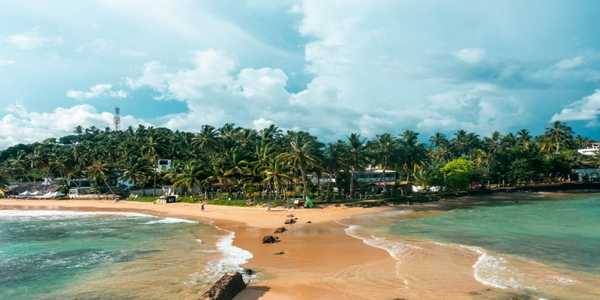Best Time To Visit Bali For Perfect Weather And Prices
Bali is a famous travel destination in the world, referred to as the Island of the Gods. It boasts some of the most spectacular beaches, a rich cultural heritage, and breathtaking scenery, attracting millions of tourists annually.
However, the most suitable time to visit Bali depends on your desired experience, whether it is the beautiful weather, the reduced number of visitors, or the affordable prices. This is where you will find assistance in deciding when to visit Bali, including information on weather, prices, and a complete guide to a memorable stay.
Best Time for Weather in Bali
The most popular time is during the dry season, from May to October, when the weather is perfect. The weather is generally sunny during these months, and you may not encounter much or any rain, with the temperatures standing between 21 °C and 32 °C.
The shoulder months in Bali are November and December, when the weather is pleasant, there is minimal rain, and the crowds are limited. That is why this is the perfect time to experience the beautiful Bali beaches, vibrant culture, and take in the stunning hiking tours. The costs of hotel rooms in May and June are usually lower compared to the peak months, and this will allow you to explore Bali at a lower price.
September and October are the months with the best weather and few tourists, just before the start of the wet season. The months are ideal for enjoying Bali's outdoor beauty without incurring the increased costs and high-season tourist crowds. They are also considered to be low in price compared to peak months, making this the best time to cater to budget-conscious travellers and those who prefer experience-based travel.

Best Time for Fewer Crowds
Although Bali is a great destination all year round, there are also periods in the year that are evidently busier than others. If you prefer not to spend too much time in the crowd or avoid paying premium prices, it's essential to be aware of Bali's high and low seasons.
High Season: The peak season in Bali typically falls between July and August (Australian winter holidays and mid-term school vacations) and December (Christmas and New Year's). The months are filled with tourists, beaches, and resorts, and accommodation and flight prices are likely to skyrocket. Accommodation and flights will cost 20-30 per cent more than during the low season, and most tourist sites will be busy.
Low Season: The low season is experienced between October and November, and February and March, when the wettest weather typically occurs in Bali. These months are less busy on the island, and accommodation, flight, and tour prices are much lower. You would have a more relaxing time in Bali, and most hotels and resorts offer discounts of 15-30% during their low season. The wet season does not last the entire day, and even though it may rain, the island's landscapes remain lush and green.
Best Time to Visit Bali for Budget Travellers
When you are on a tight budget, then the wet season (November to March) is the best season to visit Bali. Lower prices of accommodation, discounted tours, and reduced flights can be enjoyed during this period. Due to the wet season, hotels and resorts typically offer promotions and discounts of up to 40% off, especially during February and November when demand is lower.
October, November, February, and March: These are the months when Bali is less popular among tourists, and as a result, prices tend to be at their lowest. The flights for the months ahead are also cheaper, with savings of between 15% and 20% compared to the peak season. The green scenery is also at its peak, making this the best season for nature lovers to explore Bali's lush fields, waterfalls, and serene natural surroundings.
Best Time for Activities
Bali offers an array of amazing outdoor experiences, including surfing, diving, hiking, and snorkelling. Each activity has the best time, which is determined by the weather and conditions.
Surfing: Bali has earned global recognition for its exceptional surf, with the best conditions between April and October, during the dry season. The dry season is characterised by strong offshore winds, which generate large swells, particularly on the west coast beaches, such as Padang Padang, Echo Beach, and Bingin Beach. The dry season is ideal for novices because the weather is more predictable, and the waves are smaller and less challenging to manage.
Diving: The ideal season for diving in Bali is from May to November, if you are a diving enthusiast. The water is also smooth, with perfect visibility, making the exploration of Bali's coral reefs and marine life an ideal experience. October is the best month to see Manta Rays. To see Mola Mola (Oceanic Sunfish), you should expect to dive in the months between August and October.
Snorkelling: The best time for snorkelling is between May and September, when the weather is calm, the ocean water is clear, and marine life is abundant. Nusa Penida and Amed are two of the snorkelling locations around Bali that are particularly active in these months, offering an abundance of sea creatures.
Hiking: The most common hiking activities in Bali, such as Mount Batur, are only suitable during the dry season (May to October). There is also dry weather, and the trails are less slippery, making the conditions perfect for hiking. During the dry season, the skies are also clearer, offering a clear view of the sunrise from the summit of Mount Batur.

Best Time for Festivals
Bali is also culturally rich, and it celebrates numerous festivals throughout the year. To people who hold an interest in watching the rich cultural calendar of Bali, the following festivals are to be planned in your trip:
Nyepi (Day of Silence): This is a special Hindu celebration held in March, when the island observes 24 hours of silence to mark the Balinese New Year. It is a calm, self-reflective day for people who want to connect with the spiritual essence of Bali.
Bali Arts Festival (June to July): This month-long festival celebrates the traditional music, dance, and art of Bali. This festival is an ideal destination for those seeking to experience the rich cultural heritage of the island.
Kite Festival (July): Dry season is the time to hold the annual Kite Festival, during which giant kites of bright colours are flown around Bali, particularly in Sanur. Visitors interested in Bali's traditions and arts can enjoy a fascinating spectacle.
Choosing the Best Time for Your Visit!
The most appropriate time to visit Bali will all depend on what matters to you. The off-peak months—May, June, September, and October present perfect conditions in terms of ideal weather, fewer people, and lower prices. During the wet season (November to March), you can find the best discounts, although there is a likelihood of challenging weather conditions. By balancing your preferences with your travel dates, whether it's the perfect weather, fewer crowds, or a rich and experienced culture, you can ensure that your trip to Bali is memorable.
Sources
Travel and Leisure – Best Time to Visit Bali
- Learned practical methods
- Solved my questions
- Inspired new ideas











